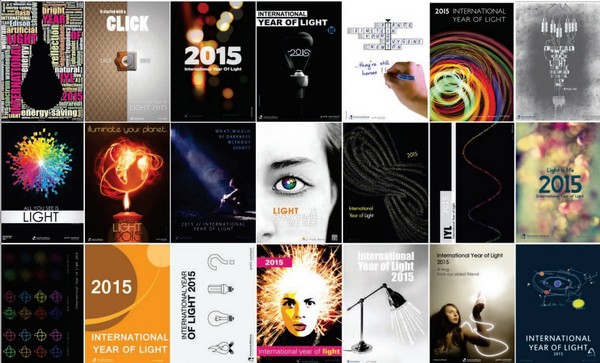The United Nations General Assembly has proclaimed 2015 as the International Year of Light and Light-based Technologies (IYL2015).
Championed by scientific organizations around the world including SPIE, the international society for optics and photonics, IYL2015 will promote improved public and political understanding of the central role of light in the modern world and celebrate significant scientific anniversaries occurring in 2015.
 |
|
Examples of different lighting applications and improvements in lighting technology. (LEDinside/SPIE) |
In proclaiming an International Year focusing on the topic of light science and its applications, the United Nations has recognized the importance of raising global awareness of how light-based technologies promote sustainable development and provide solutions to global challenges in energy, education, agriculture and health, organizers said.
“An International Year of Light is a tremendous opportunity to ensure that policymakers are made aware of the problem-solving potential of light technology,” said John Dudley, chairman of the IYL2015 steering committee. “Photonics provides cost-effective solutions to challenges in many different areas: energy, sustainable development, climate change, health, communications, and agriculture. For example, innovative lighting solutions (such as LEDs) reduce energy consumption and environmental impact, while minimizing light pollution so that we can all appreciate the beauty of the Universe in a dark sky.”
“Light gives us life through photosynthesis, lets us see back in time towards that cosmic big bang, and helps us communicate with the other sentient beings here on earth -- and should we find any, perhaps those in outer space as well,” noted Nobel Laureate John Mather, a NASA scientist and Fellow of SPIE. “Einstein studied light in developing the theory of relativity, believing that the laws of nature that give us light must surely be true no matter how fast we are moving. Now we know that even electrons and protons behave similarly to waves of light, in ways that continue to astonish us. And the optics and photonics technologies developed for space exploration have rendered many valuable spin-off applications in everyday life.”
“The International Year of Light will help raise awareness of the possibilities inherent in light-based science and engineering, and inspire new hope in those who are still waiting for solutions to their challenges,” said SPIE President-Elect Philip Stahl.
 |
|
International Year of Light 2015 posters. (LEDinside/SPIE) |
Light is more than just science and technology, Stahl noted: “It is one of the ways we experience and represent our world, through vision and the visual arts. And, it is central to how we express our deepest emotional and philosophical thoughts.”
“Light matters to all of us,” said Ana María Cetto from the National Autonomous University of Mexico. “The IYL will create a forum for scientists, engineers, artists, poets and all others inspired by light to interact both with each other and with the public so as to learn more about the nature of light, its many applications, and to discuss its role in our culture.”
The IYL2015 resolution was submitted to the United Nations Second Committee on 6 November by the nation of Mexico, with delegates from Mexico and New Zealand speaking in support, and co-sponsorship from 35 countries (see the full list in the IYL2015 proclamation announcement).
Endorsed by numerous international scientific organizations and the International Council for Science, IYL2015 will be administered by an international steering committee in collaboration with the UNESCO International Basic Sciences Programme and a Secretariat at The Abdus Salam International Centre for Theoretical Physics.
National and regional committees and contacts will ensure all nations of the world can participate. For more information, and to be placed on a mailing list for updates, please contact light(at)eps(dot)org. Downloads are available from http://www.eps.org/light2015. Or click here for PDF overview.
Founding Scientific Sponsors of IYL2015 are the European Physical Society; SPIE, the international society for optics and photonics; The Optical Society; the IEEE Photonics Society; the American Physical Society; and the lightsources.org international network.
Support during the construction phase of the project came from the African Physical Society, Ghana Academy of Arts and Sciences, International Commission for Optics, International Union for Pure and Applied Physics, Russian Academy of Sciences, New Zealand Institute of Physics and Royal Society of New Zealand, National Autonomous University of Mexico, and many other groups and individuals.













